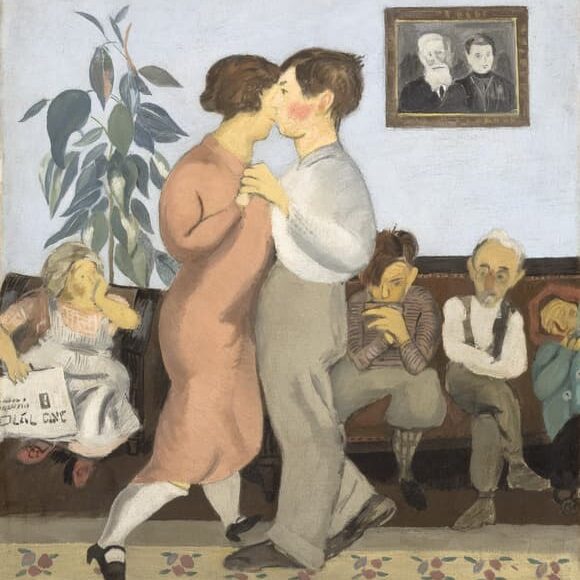Tel Dan Stele on Display at the Jewish Museum

9th Century BCE Stele Found in Israel Provides Archaeological Evidence for the Foundational Narratives of Three Monotheistic Faiths
New York, NY, October 21, 2024— The Tel Dan Stele, a 9th century BCE stone monument fragment containing the earliest mention of the royal House of David outside of the Hebrew Bible, will be on view at the Jewish Museum. On loan from The Israel Museum, Jerusalem, the stone slab’s inscription lends archaeological evidence to the existence of the Biblical King David as a historical figure, in parallel with the narrative of the Bible. The Stele will be displayed for a limited time from December 5, 2024, through January 5, 2025, as part of Engaging with History: Works from the Collection, an installation of objects from the Museum’s holdings that illustrates the vibrancy and complexity of Jewish culture across the global diaspora over more than 4,000 years.
“The Jewish Museum is privileged to host the extraordinary Tel Dan Stele, inscribed with the oldest recorded evidence of the House of David.” said James S. Snyder, Helen Goldsmith Menschel Director. “The Tel Dan Stele can be seen as a touchstone for understanding the history of the three monotheistic faiths in the Holy Land, connecting the creation of this inscription to the evolving narrative of Judaism, Christianity, and Islam over the succeeding 1,000 and more years. Presenting the Stele within the context of the Museum’s unique holdings underscores our mission to celebrate Jewish world culture through a broader historical lens that demonstrates its global interconnectedness.”
Discovered in northern Israel in the early 1990s, the Stele—an archaeological term for an upright monument used in ancient cultures to commemorate a person, place, or event—was once part of an inscription on a basalt victory Stele commemorating the military victories of King Hazael of Aram (a region in present-day Syria) between c. 842 and 806 BCE. Although Hazael’s name is not cited in the inscription, scholars believe him to be its author.
In the inscription, the Aramaic king boasts that he defeated King Jehoram of Israel and King Ahaziahu of Judah, a reference to Israel’s two kingdoms at the time, Israel in the north and Judah in the south, the latter also commonly known as the House of David. The engraved inscription’s mention of a “king of the House of David,” is a direct reference to ancient Israel’s monarch and his royal dynasty, corresponding with the Bible’s historical narrative.
The first fragment comprising the Stele was unearthed in July 1993, during excavations of an ancient stone wall in Tel Dan, Israel. The following year, two additional fragments were discovered at the same site and linked to the original fragment.
Building on the archaeological evidence of King David’s reign in Israel, the Tel Dan Stele will be exhibited alongside five late 8th century BCE handles stamped with royal seals, once part of large clay storage jars, from the Jewish Museum’s archaeology collection. The seals on these fragments are inscribed “[Belonging] to the king” in ancient Hebrew, attesting to the existence of kingship in ancient Israel. The jars were likely part of a royal provisioning system. Three of the jar handles cite the city of Hebron in their royal seal impressions, and two mention the city of Socoh in the ancient kingdom of Judah.
The addition of these artifacts to the Museum’s Engaging with History installation advances its commitment to collecting and exhibiting works from diverse cultures worldwide that resonate with the history of the global Jewish experience. Engaging with History anticipates the reinstallation of the Museum’s collections in late 2025, illustrating this new narrative and central to the complete reinvention of the Museum’s Third and Fourth Floor galleries, which is currently underway.
Organization and Support
The presentation of the Tel Dan Stele was initiated by James S. Snyder, Helen Goldsmith Menschel Director, in collaboration with Dr. Haim Gitler, Tamar and Teddy Kollek Chief Curator of Archaeology at The Israel Museum, Jerusalem.
This installation is made possible with support from the Armstrong International Cultural Foundation, in collaboration with the Jerusalem-based Armstrong Institute of Biblical Archaeology, The Israel Museum, and the Israel Antiquities Authority.
Press contacts
Anne Scher, 212.423.3271 [email protected]













